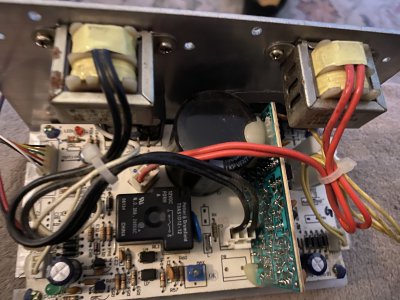you bolt the flat side of the aluminum chassis plate the controller is on to the heat sink. KB says that a sink with a width of 7 to 8 inches, height of 6-8 inches, and fins 7/8" to 1" tall on 3/8" centers will fit the bill. You want a sink with a flat back for mating to the flat side of the aluminum chassis plate. Be sure and get a thin coat of heat sink goo (that's a technical term, BTWThe KBLC 19 PM has a 12 amp rating with additional heat sink . While I can find heat sinks in salvage,nothing says where to attach it.
In operation, the fins must be oriented vertically, so chimney effect flows air up through them.



